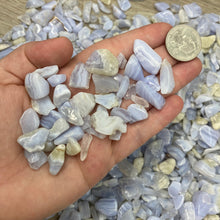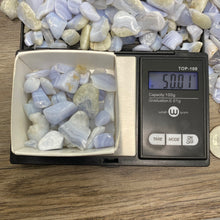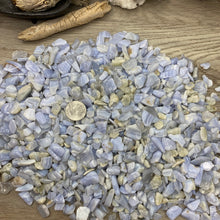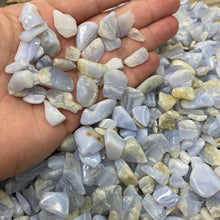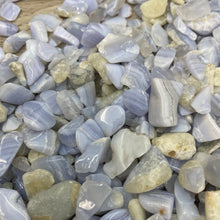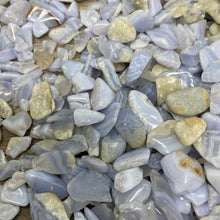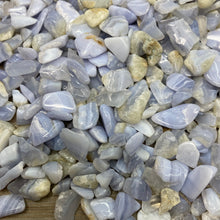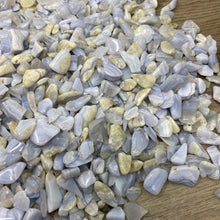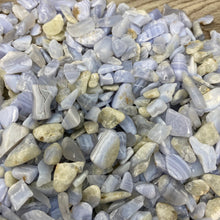
50g / 0.110lbs / 1.76oz
You will receive one random 50g bag
The stones in my hand shows 50g
Blue Lace Agate is banded in intricate patterns of light blue and white. Most of the best material comes from South Africa. Some specimens from Romania and South Africa have coatings of tiny sparkling druzy crystals.
The chalcedony veins are formed by hydrothermal deposition within large cracks in the Karoo Whitehill Formation of Namibia, Africa. These cracks are caused by a fault that runs through the area.
Agate is a variety of microcrystalline quartz (chalcedony) that displays translucence and in some cases banding. Agate primarily forms when silica-rich fluids fill pockets within rock and/or fossils, resulting in deposition of the silica along the walls of the rock. This process can result in banding patterns as the composition and impurities of the fluids change over time. These banding patterns can either form as flat layers or rounded layers, depending on the surfaces available for deposition.









